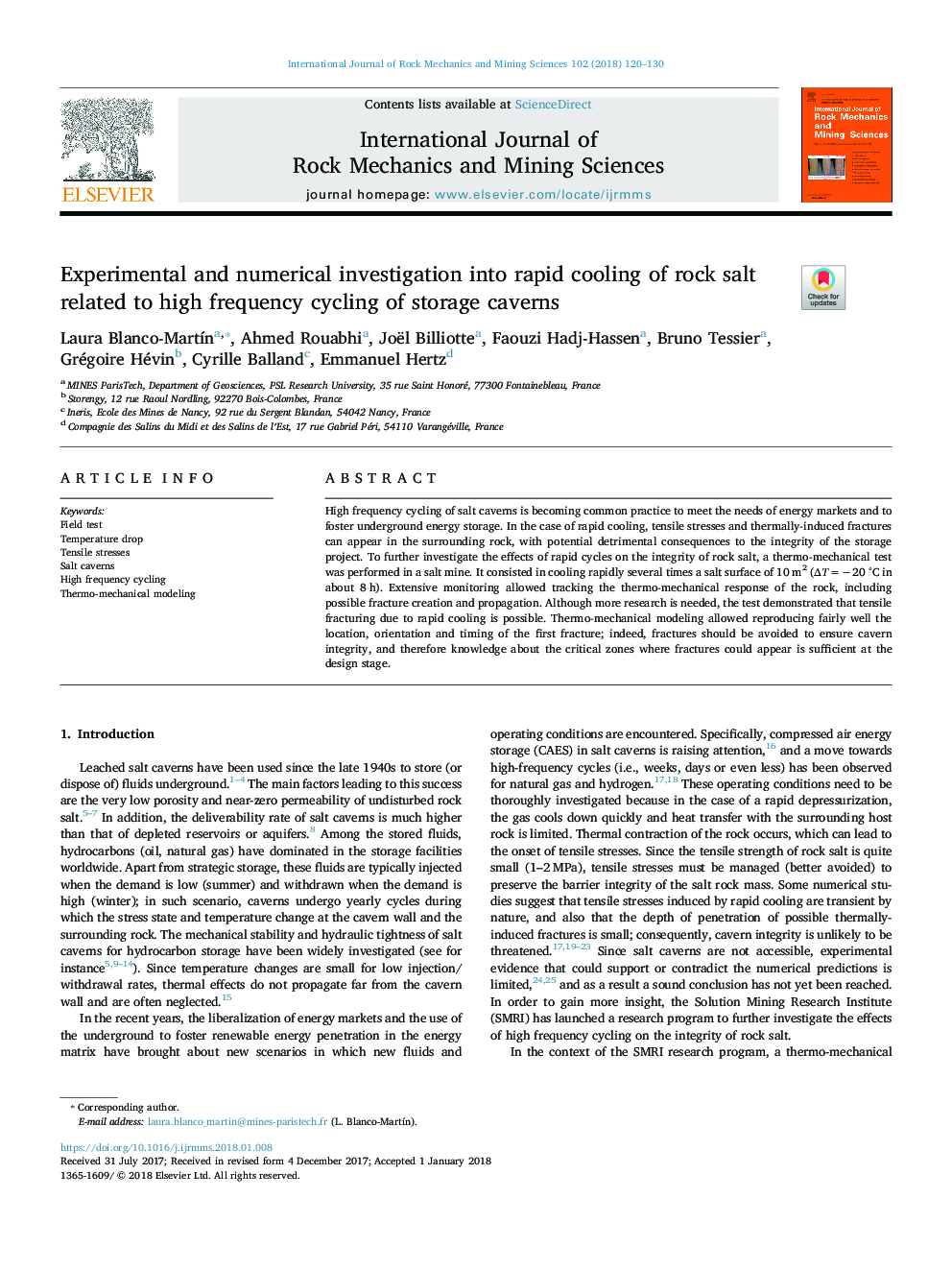| Article ID | Journal | Published Year | Pages | File Type |
|---|---|---|---|---|
| 7206370 | International Journal of Rock Mechanics and Mining Sciences | 2018 | 11 Pages |
Abstract
High frequency cycling of salt caverns is becoming common practice to meet the needs of energy markets and to foster underground energy storage. In the case of rapid cooling, tensile stresses and thermally-induced fractures can appear in the surrounding rock, with potential detrimental consequences to the integrity of the storage project. To further investigate the effects of rapid cycles on the integrity of rock salt, a thermo-mechanical test was performed in a salt mine. It consisted in cooling rapidly several times a salt surface of 10 m2 (ÎT=â20 °C in about 8 h). Extensive monitoring allowed tracking the thermo-mechanical response of the rock, including possible fracture creation and propagation. Although more research is needed, the test demonstrated that tensile fracturing due to rapid cooling is possible. Thermo-mechanical modeling allowed reproducing fairly well the location, orientation and timing of the first fracture; indeed, fractures should be avoided to ensure cavern integrity, and therefore knowledge about the critical zones where fractures could appear is sufficient at the design stage.
Related Topics
Physical Sciences and Engineering
Earth and Planetary Sciences
Geotechnical Engineering and Engineering Geology
Authors
Laura Blanco-MartÃn, Ahmed Rouabhi, Joël Billiotte, Faouzi Hadj-Hassen, Bruno Tessier, Grégoire Hévin, Cyrille Balland, Emmanuel Hertz,
